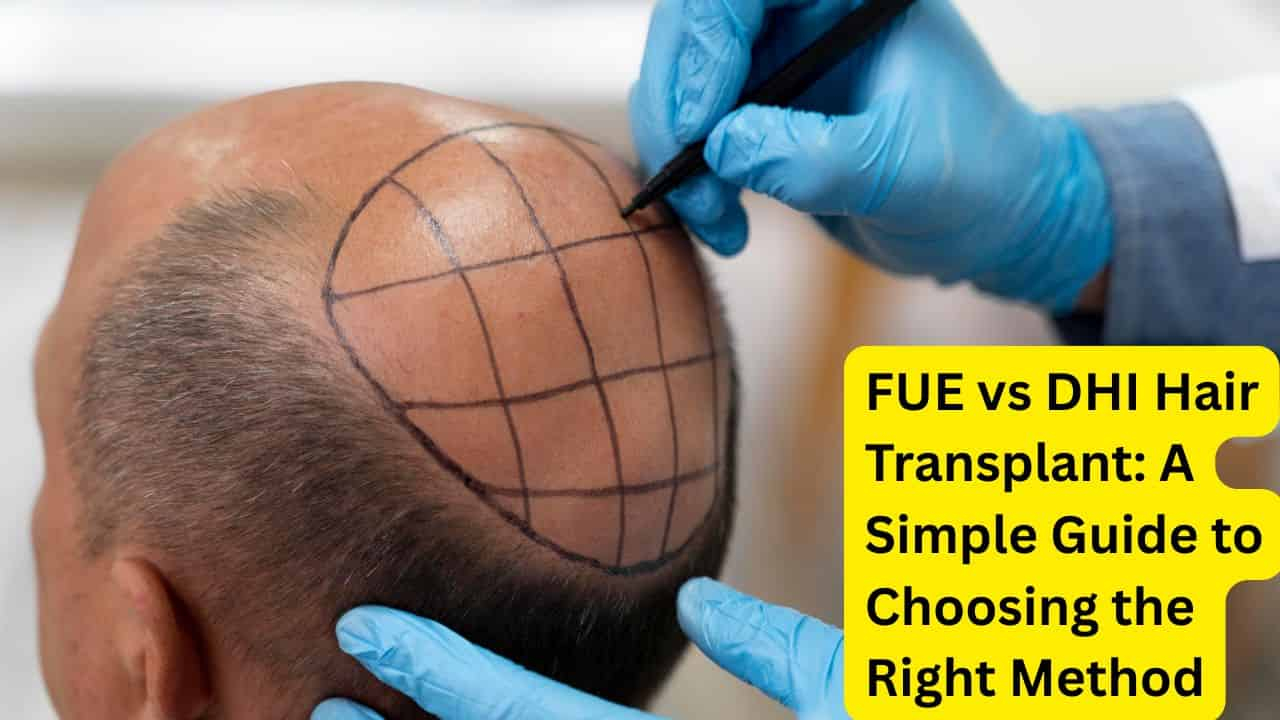Hair transplantation has become one of the most effective solutions for permanent hair restoration. Among all modern techniques, the two most popular options are FUE and DHI. If you are searching for the best hair transplant method, you will likely compare FUE vs DHI hair transplant to decide which one suits your needs.
Both FUE and DHI offer natural-looking, long-lasting results, but each method works differently, has its own benefits, and is ideal for specific situations. This SEO-friendly guide explains everything you need to know in simple, clear language.
What Is FUE Hair Transplant?
FUE (Follicular Unit Extraction) is a minimally invasive hair transplant technique where individual follicles are taken from the donor area and manually implanted into tiny slits made in the balding region.
How FUE Works
- Donor hair is trimmed.
- A micro-punch tool extracts single follicles.
- Small incisions are made in the bald area.
- Grafts are placed manually one by one.
Advantages of FUE
- Minimal scarring
- Quick healing
- Works well for large bald areas
- More affordable than DHI
- Natural results when performed correctly
FUE is often chosen by people who need full coverage rather than just refining the hairline.
What Is DHI Hair Transplant?
DHI (Direct Hair Implantation) is an advanced implantation technique derived from FUE. The extraction is the same, but the implantation method is different. DHI uses a special implanter device called the Choi Pen, which allows precise placement without creating pre-made incisions.
How DHI Works
- Follicles are extracted using FUE tools.
- Each graft is inserted into the Choi Pen.
- The graft is implanted directly into the scalp in one step.
Advantages of DHI
- Maximum control over angle, depth, and direction
- Very high-density results
- Ideal for hairline design
- Faster healing with minimal trauma
- Better graft survival due to reduced handling
DHI is usually preferred for patients wanting the most natural-looking hairline and dense packing in small areas.
How Does DHI Compare to FUE?
Understanding FUE vs DHI hair transplant is important before choosing a method. Here is a clear comparison:
| Feature | FUE | DHI |
| Incisions | Required | Not required |
| Implantation | Manual | Direct with pen |
| Density | Good | Very high |
| Cost | Lower | Higher |
| Ideal For | Large bald areas | Hairline & small areas |
| Healing | Quick | Slightly quicker |
Simple Explanation
- FUE is better for large coverage.
- DHI is better for precision and hairline refinement.
Both techniques provide permanent, natural results when performed by experts.
Is DHI More Painful Than FUE?
Pain is one of the biggest concerns for most patients. However, both procedures use local anesthesia, meaning you stay awake but do not feel pain.
Pain Comparison
- DHI is NOT more painful than FUE.
- Most people feel only mild pressure during both procedures.
- After surgery, discomfort is usually low and manageable.
In fact, DHI may feel slightly gentler during implantation because it uses fewer incisions.
Which Method Gives the Most Natural Results?
Both techniques can deliver extremely natural outcomes, but each excels in different areas:
FUE Naturalness
- Great for blending
- Ideal for mid-scalp and crown
DHI Naturalness
- Best for hairlines due to perfect angle control
- Allows ultra-dense packing
If your goal is the most flawless hairline, DHI may offer a slight advantage.
Which Method Heals Faster?
Both are minimally invasive, so healing is quick:
- FUE: 5–7 days for crusts to disappear
- DHI: 3–5 days due to fewer incisions
DHI often heals a little faster, but the difference is small.
Who Is FUE Best For?
Choose FUE if you:
- Have a large bald area
- Want a more budget-friendly option
- Need more grafts in one session
- Want a quicker overall procedure
FUE is the better choice for people who need complete coverage of the scalp.
Who Is DHI Best For?
Choose DHI if you:
- Want a natural and defined hairline
- Need dense packing in a specific area
- Want precise control over each graft
- Prefer less trauma to the scalp
DHI is ideal for patients with mild-to-moderate hair loss, especially in the frontal zone.
Disadvantages of DHI
Although DHI is advanced, it has some drawbacks:
1. Higher Cost
The equipment and skill required make DHI more expensive.
2. Longer Procedure for High Graft Numbers
Covering 3000+ grafts takes more time using the Choi pen.
3. Not Suitable for All Hair Types
Curly or very thin donor hair can be harder to load into the pen.
4. Highly Technique-Dependent
Only trained surgeons can achieve consistent results.
Because of this, FUE remains a universal and widely suitable technique.
Which Technique Lasts Longer?
Both FUE and DHI provide permanent results because grafts are taken from the “permanent zone” of the scalp. Longevity depends more on:
- Post-care
- Lifestyle
- Surgeon’s expertise
Rather than the technique itself.
Conclusion: FUE vs DHI Hair Transplant — Which One Should You Choose?
Both methods are effective and produce natural, permanent results. The right choice depends on your goals:
✔ Choose FUE if:
- You need large area coverage
- You want a cost-effective option
- You require a high number of grafts
✔ Choose DHI if:
- You want a sharp, natural hairline
- You want dense packing and precision
- You prefer faster healing with minimal trauma
The best approach is to consult an experienced surgeon who can evaluate your scalp condition and guide you toward the right technique.
Ready for a Hair Restoration Plan Designed for You?
Book a Free Hair Transplant Consultation today and discover whether FUE or DHI is the best choice for your hair goals.
Get personalized guidance and a treatment plan tailored to your needs.
